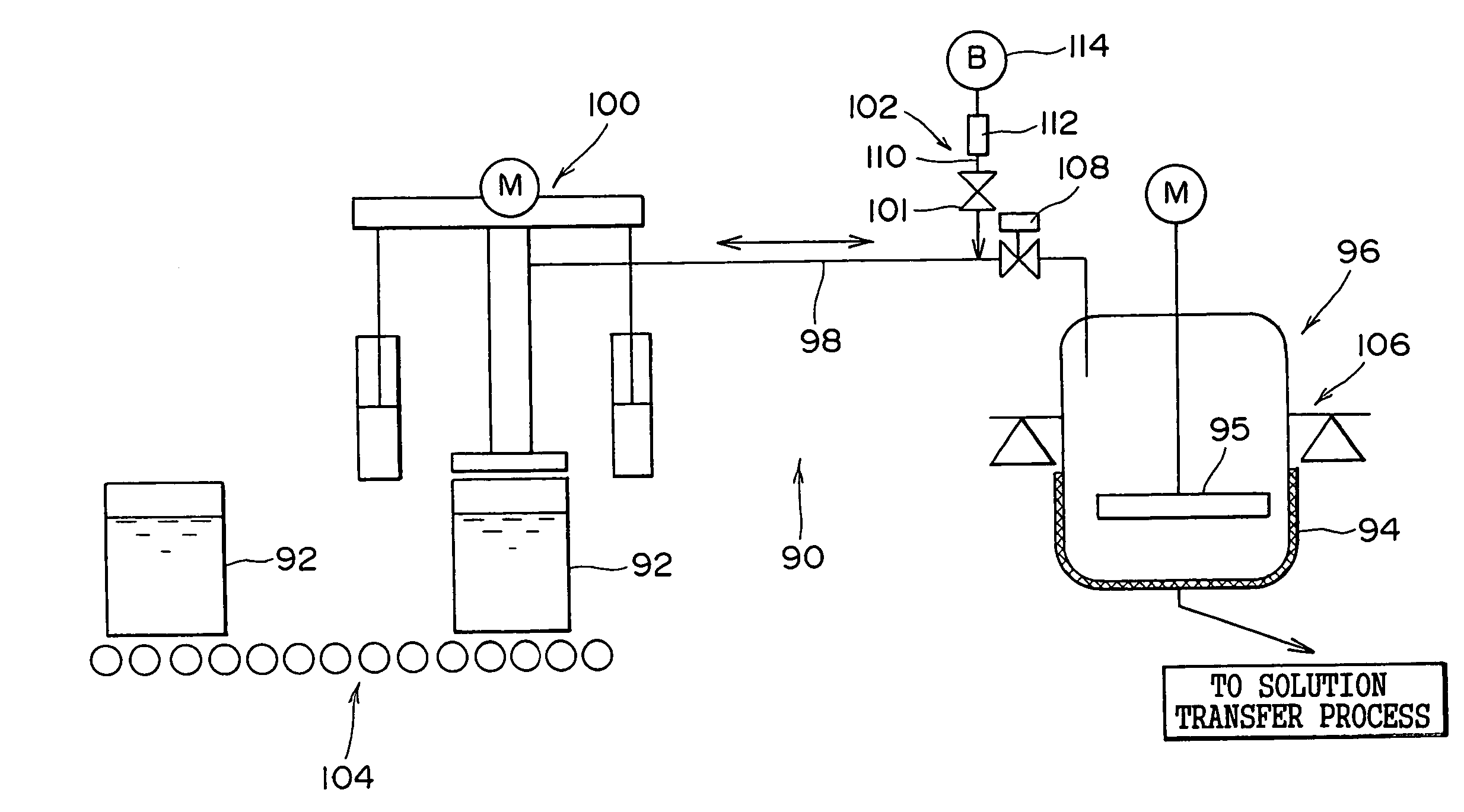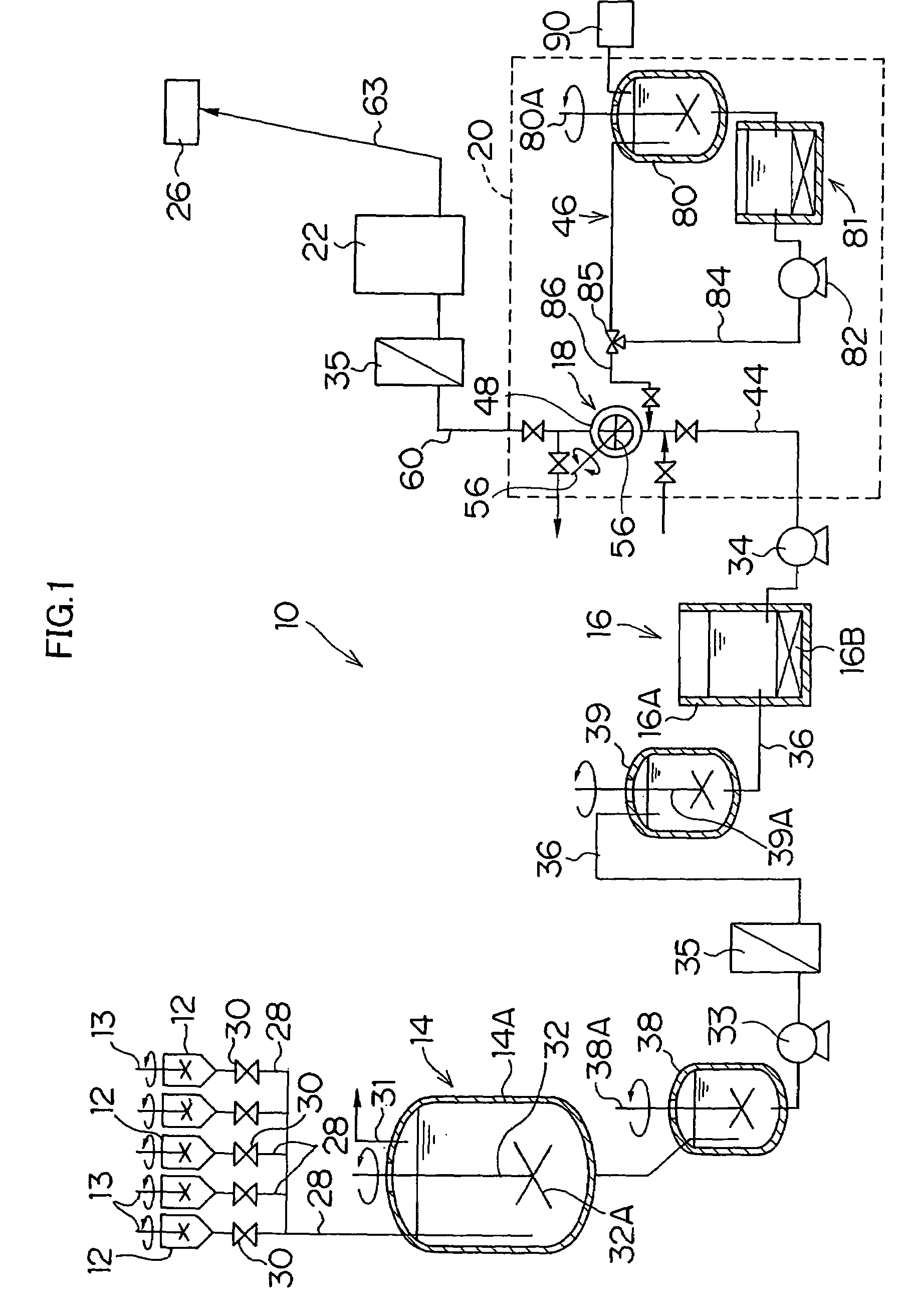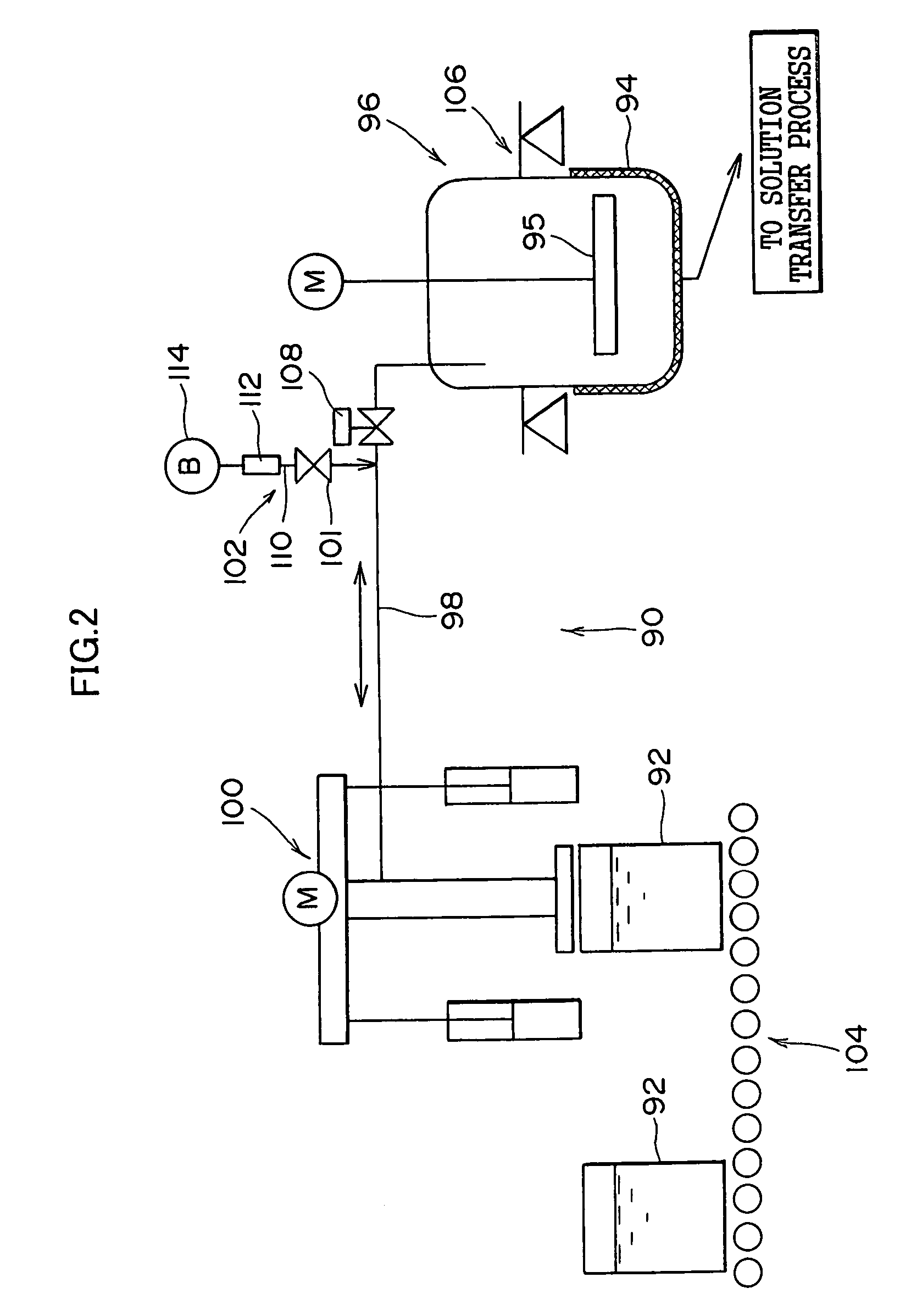Method and apparatus for liquid preparation of photographic reagent
a technology of liquid preparation and photographic reagent, which is applied in the direction of photosensitive materials, instruments, pressurized chemical processes, etc., can solve the problems of no equipment, enhanced quality deterioration and reagent loss, and liquid quality deterioration, so as to reduce the cost
- Summary
- Abstract
- Description
- Claims
- Application Information
AI Technical Summary
Benefits of technology
Problems solved by technology
Method used
Image
Examples
examples
[0068](1) Description will be made below in terms of specific numerical values on the method and apparatus for liquid preparation of photographic reagents of the present invention.
[0069]Examples 1 to 3 listed in Table 1 represent the batch-wise methods for liquid preparation of the present method, wherein the silver halide emulsion for use in a heat-developable photosensitive material is transferred by a pump via piping without being heated to the measuring tank to undergo measurement, and subsequently melted by heating at 40° C. Comparative Examples 1 and 2 listed in Table 1 represent the conventional continuous methods for liquid preparation, wherein the silver halide emulsion is continuously melted by heating in a heating tank which is heated at 40° C. by a heating device, and the liquid preparation is carried out by continuously measuring the required amounts.
[0070]The photographic performances were investigated when the heat-developable photosensitive materials were prepared by...
PUM
 Login to View More
Login to View More Abstract
Description
Claims
Application Information
 Login to View More
Login to View More - R&D
- Intellectual Property
- Life Sciences
- Materials
- Tech Scout
- Unparalleled Data Quality
- Higher Quality Content
- 60% Fewer Hallucinations
Browse by: Latest US Patents, China's latest patents, Technical Efficacy Thesaurus, Application Domain, Technology Topic, Popular Technical Reports.
© 2025 PatSnap. All rights reserved.Legal|Privacy policy|Modern Slavery Act Transparency Statement|Sitemap|About US| Contact US: help@patsnap.com



